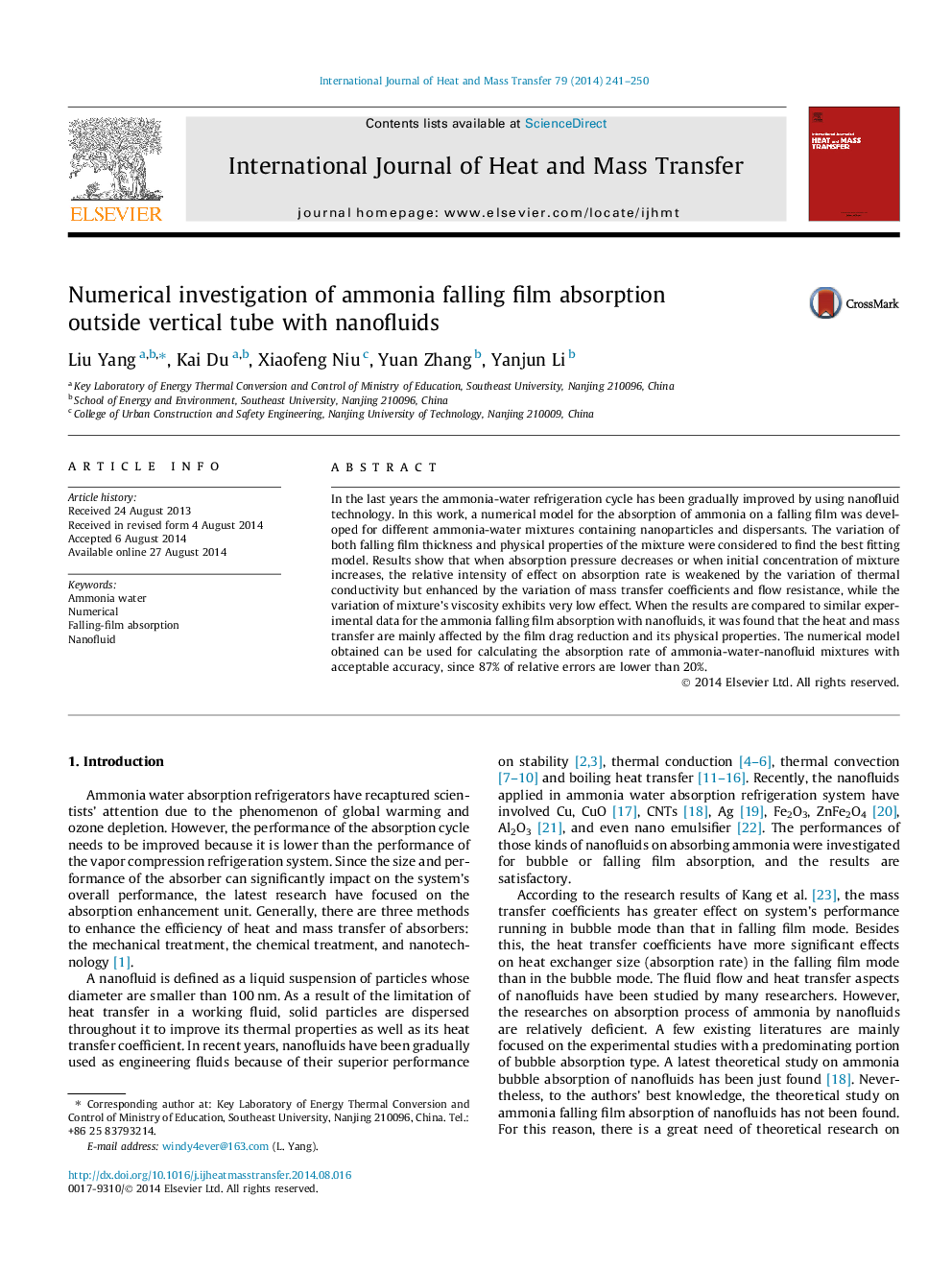| Article ID | Journal | Published Year | Pages | File Type |
|---|---|---|---|---|
| 657403 | International Journal of Heat and Mass Transfer | 2014 | 10 Pages |
In the last years the ammonia-water refrigeration cycle has been gradually improved by using nanofluid technology. In this work, a numerical model for the absorption of ammonia on a falling film was developed for different ammonia-water mixtures containing nanoparticles and dispersants. The variation of both falling film thickness and physical properties of the mixture were considered to find the best fitting model. Results show that when absorption pressure decreases or when initial concentration of mixture increases, the relative intensity of effect on absorption rate is weakened by the variation of thermal conductivity but enhanced by the variation of mass transfer coefficients and flow resistance, while the variation of mixture’s viscosity exhibits very low effect. When the results are compared to similar experimental data for the ammonia falling film absorption with nanofluids, it was found that the heat and mass transfer are mainly affected by the film drag reduction and its physical properties. The numerical model obtained can be used for calculating the absorption rate of ammonia-water-nanofluid mixtures with acceptable accuracy, since 87% of relative errors are lower than 20%.
